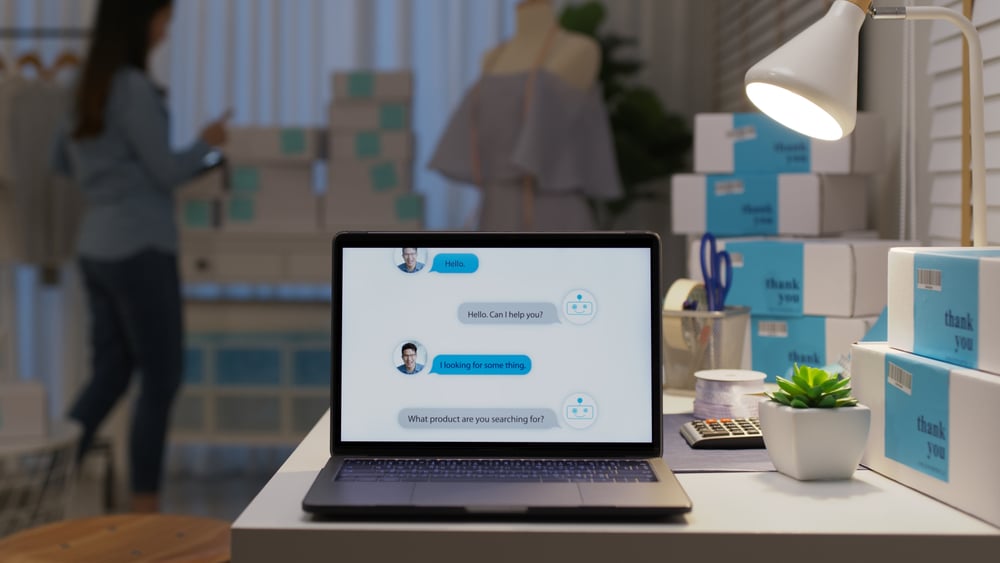
It is no surprise when a viral platform like ChatGPT goes mainstream, industries across the board are quick to jump on the potentially industry-changing technology.
Over the past few months, there have been multiple posts from marketers, advertisers, creators and more on how they plan to use chatbots like ChatGPT in the future.
For those who have potentially missed the biggest story in tech since the birth of the internet, ChatGPT is a free to use chatbot platform that generates human-like text in a conversational way.
Upon release of its third iteration, ChatGPT saw over a million users in five days.
The virality of the chatbot across social media has seen even more users come across the platform since its release on December 1, 2022.
Since the birth of the third version of the chatbot, companies such as Microsoft and more are looking at how they can integrate AI-powered chatbots into their business at an internal level and a service level.
“At the moment, people are simply blown away with how you can just ask anything and everything and you get these incredible responses,” says Tim Warren, CEO and Founder of AI customer service automation system, Ambit.
Warren says that the chatbots can be used on internal or external cases, external referring to service aspects such as making it easier for retailers to communicate with consumers.

On an internal use case, Warren says he can see AI-powered chatbots being used when it comes to IT support and also being really big for the HR departments when it comes to employee experience.
Read more: What does the mainstream AI ChatGPT mean for NZ?
“One of the things you want when you’re working at a company is that buddy, that person that you can ask anything. And where it really comes up is interns at big companies, they might take in, overseas especially, they might take a thousand interns for a summer,” he says.
“Imagine giving them a personalised buddy who can help them learn all about the company, help them with their career development, introduce them to people, set up meetings. It’s a no-brainer.”
The humanlike responses from the likes of ChatGPT is what appeals to departments such as HR where employees can still have conversations.
“The magic thing about this technology is we can just tell it in conversation. No code. It’s quite sensational,” he adds.
Warren says the beauty of chatbots like ChatGPT is that it is “essentially unlimited” in both how you code it to work and the accessibility.
“It’s staggering and revolutionary. It is quite frankly going to change the world.”
PR company Brainchild have recently released a blog post regarding the potential the AI-powered chatbot has on the public relations industry.
“If AI can help us get the best results for our clients, I am all in. But it will be used as a tool, not a replacement for the creative human team at Brainchild,” says Angela March of Brainchild.
March says that though they are not at a point where they can use the AI-powered chatbots, they are interested in how it might support them in the future.
“We value curiosity, so we are investing time to test and learn how AI works within our business. It is as much about understanding AI’s limitations as educating ourselves on how to get the best from it,” she says.
March adds that when considering using AI chatbots in their work need to meet the “ethical considerations” on both a technological and industry level.
“We will take our time to understand the broader implications of AI while also seeking guidance from industry bodies like the Public Relations Institute of New Zealand (PRINZ), whose code of ethics we are already bound by,” she adds.
“Recognising AI as a tool, not a replacement for a well-planned strategy and thoughtfully created content, will also be essential.”

Looking into the future, March sees the use of AI in general has a huge part of the marketing toolbox. As marketing becomes increasingly personalised and AI can make it even easier for brands to be individual and personalised.
Brands that are able to harness AI will be rewarded with loyal and engaged customers.
But for now, “I suspect AI might, in time, become a bit like spellcheck – a helpful tool but not something we can trust to get it right every time,” she says.
In the case of Microsoft, they have worked on an AI-powered chatbot early on in the wave and using the software to generate original code from the massive amounts of pre-existing code they put into the chatbot.
“You use conversation, and that’s where it meets up. So, they put money into that so they can generate code. It turns out that it can create anything and that’s where it gets really scary,” he says.
“The GPT side is what I think has opened people’s eyes up to the fact that this has gone from being quite good chat to being amazing, really sensational.”
With the app hitting mainstream, implementing technology such as ChatGPT into business frameworks and strategies should be planned out at senior, even executive levels says Warren.
However, there is no harm in not jumping the gun on AI-powered chatbots but rather looking into various ways it can be implemented in the business to ensure an innovative use of the technology that helps the industry.




